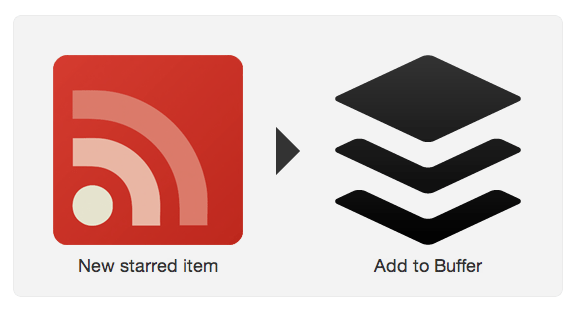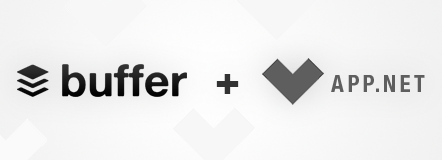 It’s been about 1 week now, since App.net has reached their funding goal via a Kickstarter like funding process. They’ve raised a total of $803,000 from the original $500,000 that were sought to raise.
It’s been about 1 week now, since App.net has reached their funding goal via a Kickstarter like funding process. They’ve raised a total of $803,000 from the original $500,000 that were sought to raise.
Around the same time as Dalton Caldwell, App.net’s CEO and founder posted his by now already legendary “We did it” post, we went live with Buffer integration of App.net.
Whilst I normally cover updates on how the feature works, with this post, I wanted to give you a bit more. A lot of people have asked us, why we, as a thirdparty app developer, would support a social network in such an early phase. The reason is simple, App.net is quite simply different and deserved our immediate attention we felt.
Here is an explanation to I hope most questions on our thinking here at Buffer. Oh and of course also lots of screenshots on what you can do with the new App.net + Buffer combo.
A unique promise for App developers no one ever made before
First off: What is App.net? App.net is a new social messaging platform that allows you to send posts back and forth similar to text messaging or Twitter. The difference is, that the only way you can use App.net is through other apps that are built on top of its API as clients. The first client is one that App.net has developed themselves called Alpha. There are lots of other ways you can use App.net already though. Right now, only a limited amount of people is allowed in, you can however request an invite and pay the $50 usage fee.
The first and foremost reason for us to support and integrate App.net is their unique promise to support and embrace third party developers like no one else has done before. Whilst we have had a great experience with other social platforms, I believe App.net could take this even further.
Dalton stated and clarified very clearly the following points, which gave us a lot of trust:
- Commitment to coordinate between internal and external parties to create and support open-source “lightweight” clients in as many flavors as we can, ala Stripe
- Commit to enabling and supporting users in building inbound and outbound syndication to and from App.net
And our experience in working with App.net was amazing. Dalton and his team were swift to respond to any questions via email, offered help for the integration and helped us spread the word once it was live. Very quickly it became evident that Dalton is actively following through on each of his promise, sticking to his words precisely as he laid them out.
When Alpha, the first web client for App.net was barely working, they already pushed a list of the first third party app developers to users out and actively helped getting it setup and running.
Following through: Building an API and developers build the rest
In this past week, the App.net team followed through on every word they mentioned. Another one of the key points that made us jump onto the bandwagon right when App.net was born, was the focus on users and developers – only.
The way App.net achieves this for developers is through a unique setup of their technology. What App.net really is, is just an API, to allow you to send messages back and forth. That’s as precise as it gets and it is admittedly difficult to understand if you aren’t technical like me for example. There is nothing you can touch, nothing you can point towards and say “ah yes, this thing here, that’s App.net”.
Doing this, puts App.net in a unique position. They can solely focus on building the best possible technology for other developers like us, to build on top of them. They will never have to “compete” with other developers for their own clients, as this is not at all their focus. The fact that they are building their own client with Alpha, is merely to showcase their technology. Dalton writes:
You can browse the global feed at alpha.app.net. This is a webapp that we built in the last two weeks on top of our documented API. Think of this web application as a “proof of concept”.
The way this is achieved for users comes from the unique proposition no social platform ever had: App.net is paid to use.
Quite easily understood, if you build a social platform, where people can interact with each other, you need to make money to maintain it. What most attempts have been here is to make money through advertising. Whilst there is nothing to say that doing both can’t work, it’s simply interesting to think about an organization that focuses on one.
Normally, in the case of having to satisfy both of these completely different interest, there is a certain dilemma a platform faces: The one of the advertiser and the one of the day-to-day user. App.net will never have to do this awkward split. As App.net is paid to use from day one, they can ignore the revenue question and instead be laser focused on how users experience the site. That is awesome.
How to make the most of the Buffer & App.net combo
Now onto how the integration with App.net and Buffer actually works. The power comes in here, especially as you can not only use Buffer and App.net now, but also share to other apps Buffer is integrated with.
The best way to get started is to login to Buffer with one of your social accounts and then hit the “connect account” button:

Click the App.net button and you are already setup:

Now that you are all setup, the best way to start sharing to App.net is by grabbing the Buffer browser extension. This means you can immediately start sharing updates to App.net from anywhere on the web, including from Google Reader, Twitter, Facebook and other places:
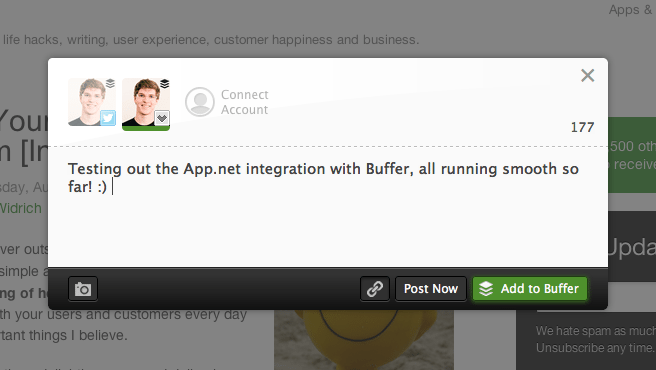
You can also use any Tweet button on the web to share to App.net:
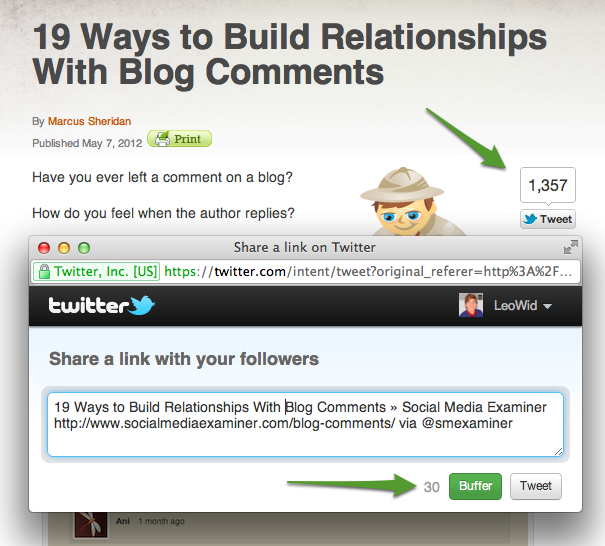
Awesome iOS and Android integrations:
Of course you can already use Buffer to share to App.net from your favorite newsreading apps and Twitter clients. One of the most popular Buffer integrations comes with Reeder, where you can already share to App.net today:
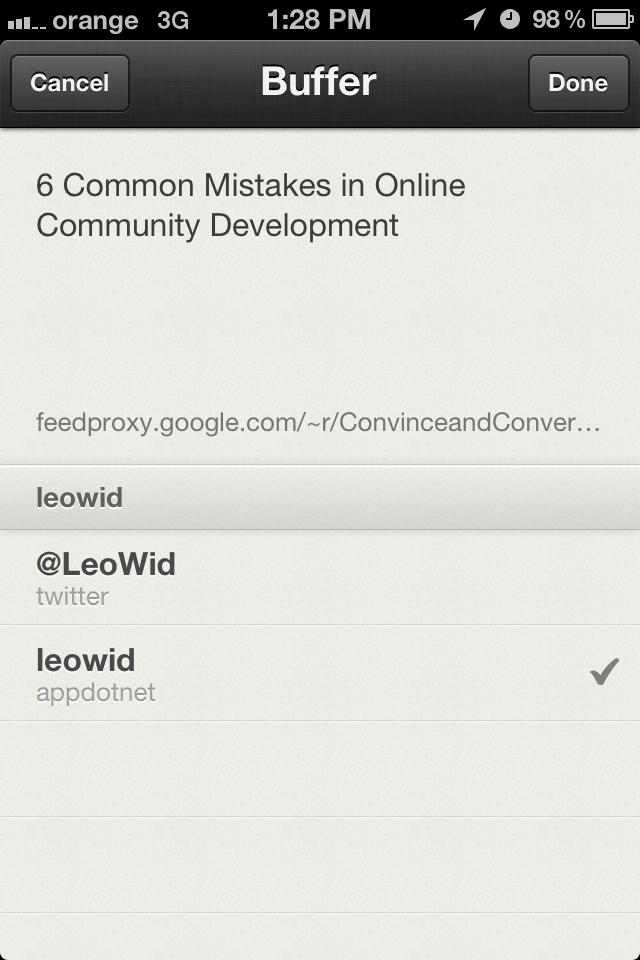
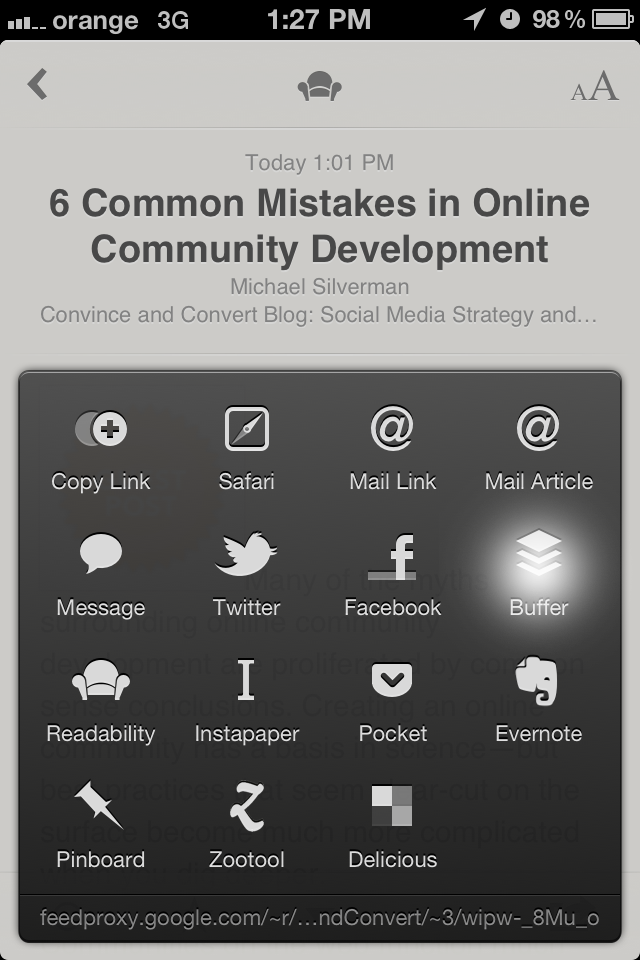
Whilst this works with all other application, you can already also Buffer from the iPad to App.net with Mr.Reader:
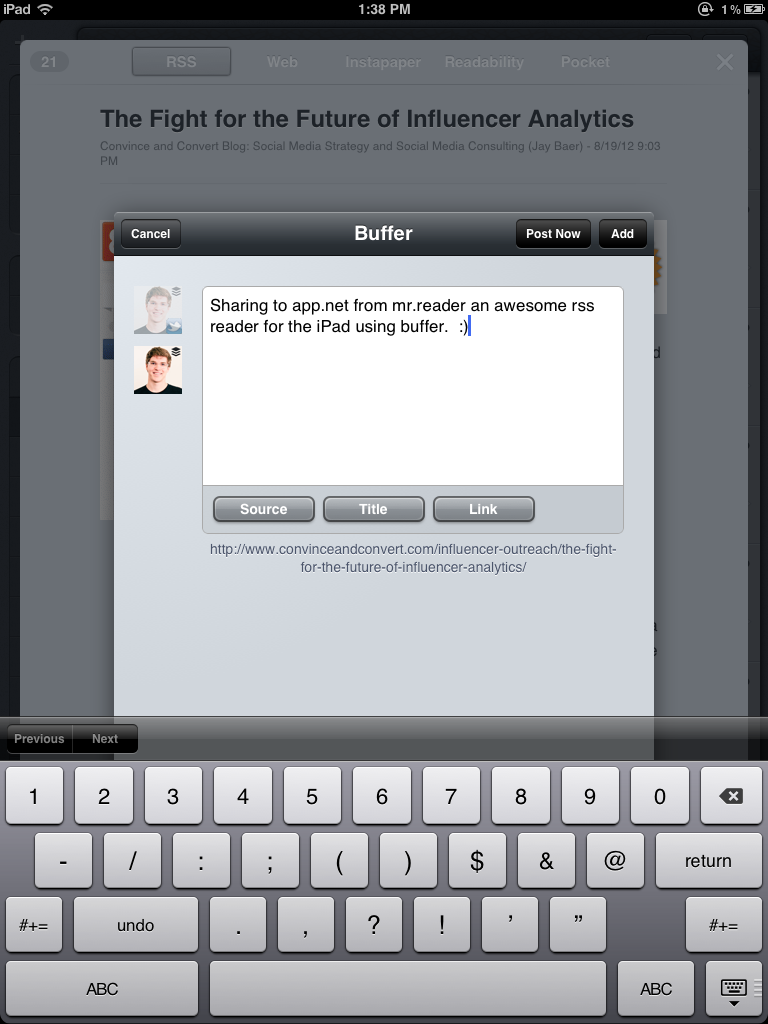
The Buffer integration also makes IFTTT already fully functional with App.net. Setup any of your favorite recipes and have awesome updates go out to your App.net page easily and hassle free:
There is lots of other integration that you will be able to do this way. Use the Buffer Android app to share from Flipboard, Pulse or any other newsreader on your Android phone. Use the Buffer iPhone app to share from Pocket, Instapaper and lots of other apps to App.net right now.
What about Twitter, Facebook and LinkedIn?
In lots of recent interviews for the media including Cnet, TheNextWeb, .net magazine and others, one question came up very consistently. So what happens to your thoughts about Twitter, Facebook and LinkedIn as platform providers which you have built on?
For us, the answer is very clear. Our goal with Buffer is to build tools that make it easier and smarter to use any social platform. We have done this with Twitter, Facebook, and LinkedIn. And now, we do the same with App.net. Dalton and his team have an incredible focus and truly embraced and actively supported us as app developers right from the start. That is something we wanted to be part of and they continue to iterate incredibly fast.
We are extremely friendly with Twitter, App.net, and any other social platforms we support. All we want is to help expand the usability of these platforms with innovation built on top of them.
I am super excited about the future of App.net and what we can expect from Dalton and his team next. The Buffer integration has been amazingly popular so far and it is really great to see so many users using it to share their ideas. What are your thoughts on App.net? I’d love to hear your perspective in the comments.
Try Buffer for free
190,000+ creators, small businesses, and marketers use Buffer to grow their audiences every month.
